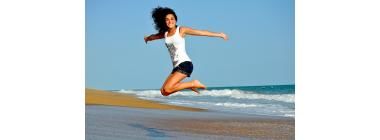
Swim in safe waters
Swimming only in clean, uninfected water is necessary to protect yourself from a wide range of serious health risks.
Here’s a breakdown of why it's so crucial, categorized by the types of dangers present in contaminated water.
1. Risk of Waterborne Illnesses (From Swallowing Water)
Bacteria: Contaminated water can contain bacteria like E. coli, Salmonella, Shigella, and Vibrio (which causes cholera). These can lead to severe gastrointestinal illnesses, causing symptoms like:
Violent diarrhea and vomiting
Stomach cramps and nausea
Fever and dehydration
Viruses: Water contaminated with human sewage can contain viruses like Norovirus and Hepatitis A. These can cause similar gastrointestinal distress and, in the case of Hepatitis A, more serious liver problems.
Skin Rashes and Infections: Bacteria in the water can cause folliculitis (itchy red bumps on hair follicles), impetigo, or other painful rashes. The parasite Schistosoma, found in freshwater in certain tropical and subtropical regions, can penetrate the skin and cause a severe disease called schistosomiasis.
Eye Infections: Pink eye (conjunctivitis) can easily be contracted from bacteria and viruses in contaminated water.
How to Identify Safe Water to Swim In
It's not always obvious if water is contaminated. Here’s what to look for:
Official Signs & Warnings: Always obey posted signs. They are there for your protection. Warnings for "No Swimming," "Bacterial Levels Unsafe," or "Harmful Algal Bloom Present" are not suggestions—they are critical safety information.
Visual Clues: Avoid water that is:
Discolored or unusually murky.
Smelly (e.g., smells like sulfur, sewage, or chemicals).
Scummy or has a thick, paint-like surface layer (a sign of algal blooms).
Having visible pipes discharging into it (storm drains or sewer outflows).
Location: Be cautious swimming after heavy rains, which wash pollutants into water bodies. Avoid swimming near large groups of waterfowl (ducks, geese) or agricultural runoff areas, as these can significantly increase bacterial counts.
Trusted Sources: Stick to designated swimming areas that are regularly monitored for water quality by local health or environmental departments. Many regions have online beach advisory websites.
In a Nutshell:
Swimming in clean, uninfected water is a simple but critical precaution to ensure a fun and safe experience. The risks of contaminated water—from a miserable day of stomach cramps to life-threatening neurological or liver damage—are severe and simply not worth taking. When in doubt, stay out!
By Jamuna Rangachari








